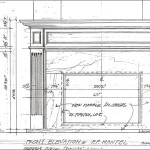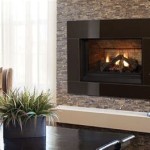Choosing the Right Fireplace Wood Mantel
The fireplace, a focal point in many homes, offers warmth, ambiance, and a sense of gathering. A crucial element that completes the fireplace's aesthetic is the mantel. Among the numerous materials used for mantels, wood remains a popular and versatile choice. This article explores the considerations involved in selecting a fireplace wood mantel, focusing on safety, style, and wood type.
Safety Considerations for Wood Mantels
Safety is paramount when choosing and installing a wood mantel. Wood, being a combustible material, requires careful consideration of clearance distances from the firebox opening. Building codes typically specify minimum clearances to prevent the mantel from overheating and potentially catching fire. It is crucial to consult local building codes and regulations before installation.
The distance between the top of the firebox opening and the bottom of the mantel is a critical measurement. Generally, a clearance of at least 12 inches is recommended for non-combustible mantels. Wood mantels, however, typically require a greater clearance, often ranging from 18 to 24 inches or more, depending on the depth of the mantel. The deeper the mantel (the distance it projects from the wall), the more heat it will absorb, necessitating a greater clearance.
A heat shield is another safety measure that can be employed. Installing a non-combustible heat shield between the fireplace opening and the mantel can reduce the amount of heat absorbed by the wood. Heat shields are typically made of materials like metal, tile, or stone and can be integrated into the fireplace design to minimize their visual impact.
Additionally, the type of fireplace plays a role in determining the required clearances. Gas fireplaces, which generally produce less radiant heat than wood-burning fireplaces, may allow for slightly smaller clearances. Nevertheless, adhering to the manufacturer's specifications and local building codes is essential, regardless of the fireplace type.
Selecting a Style to Complement the Existing Decor
The style of the wood mantel should complement the overall aesthetic of the room. Mantels are available in a wide range of designs, from rustic and traditional to modern and minimalist. Choosing a style that aligns with the existing décor will create a cohesive and visually appealing fireplace area.
Traditional mantels often feature ornate carvings, decorative moldings, and a substantial presence. These mantels are well-suited for homes with classic or formal interiors. Common wood types for traditional mantels include mahogany, cherry, and walnut, which are known for their rich colors and fine grain patterns.
Rustic mantels, on the other hand, embrace natural imperfections and textures. They may be crafted from reclaimed wood or feature a rough-hewn appearance. Rustic mantels are a good choice for homes with a farmhouse, cottage, or country-style décor. Wood types like pine, cedar, and oak are frequently used for rustic mantels due to their durability and natural character.
Modern mantels typically have clean lines, simple shapes, and a minimalist design. They often feature a smooth, unadorned surface and may be stained or painted in neutral colors. Modern mantels are ideal for contemporary homes with a focus on simplicity and functionality. Maple, birch, and poplar are commonly used for modern mantels due to their smooth surfaces and ability to take paint or stain evenly.
Beyond these broad categories, there are numerous variations in mantel style, allowing homeowners to find a design that perfectly suits their personal preferences. Considerations such as the size of the room, the height of the ceiling, and the existing color palette can all influence the choice of mantel style.
Choosing the Right Wood Type
The type of wood used for the mantel significantly impacts its appearance, durability, and cost. Different wood species have unique characteristics that make them suitable for various applications. Factors such as grain pattern, color, hardness, and resistance to warping should be considered when selecting a wood type.
Hardwoods, such as oak, maple, cherry, and walnut, are generally more durable and resistant to dents and scratches than softwoods. They also tend to have more intricate grain patterns, adding visual interest to the mantel. Hardwoods are typically more expensive than softwoods, reflecting their superior quality and durability.
Softwoods, such as pine, cedar, and fir, are less expensive and easier to work with than hardwoods. They are often used for rustic mantels or when a painted finish is desired. Softwoods are more susceptible to dents and scratches, but they can be protected with a durable finish.
Reclaimed wood is another option to consider. Reclaimed wood is salvaged from old buildings, barns, or other structures and can add a unique character and history to the mantel. Reclaimed wood often has a weathered appearance and may contain nail holes or other imperfections, adding to its charm. However, it's crucial to properly process reclaimed wood to ensure it is free of pests or rot before using it for a mantel.
The choice of wood type also depends on the desired finish. Some wood species are better suited for staining, while others are more suitable for painting. For example, maple and birch are excellent choices for painting because of their smooth surfaces, while oak and cherry are ideal for staining because of their rich color and grain patterns.

How To Select And Size Your Fireplace Mantel Water S Edge Woods Custom Wood

Fireplace Mantel Rustic Wood Custom Hong Kong

Wood N Finish Fireplace Mantel Kit Walnut

Barnwood Fireplace Mantel The Collection

Diy Wood Mantel Simple To Make Artsy Rule

Collection Of Premium Wood Fireplace Mantels Dogberry
:max_bytes(150000):strip_icc()/ablossominglife-4151b41015a64193a437e981c3aad037.jpg?strip=all)
17 Diy Fireplace Mantel Plans
Fireplace Mantles Custom Made Barnwood By Century Home Renos Chr Contact Us Today 905 259 7307 Handcrafted Furnishings Timber Framing

Fireplace Mantel Modern Rustic Wood Israel

Why Wooden Fireplace Mantels Are Simply The Best
Related Posts








